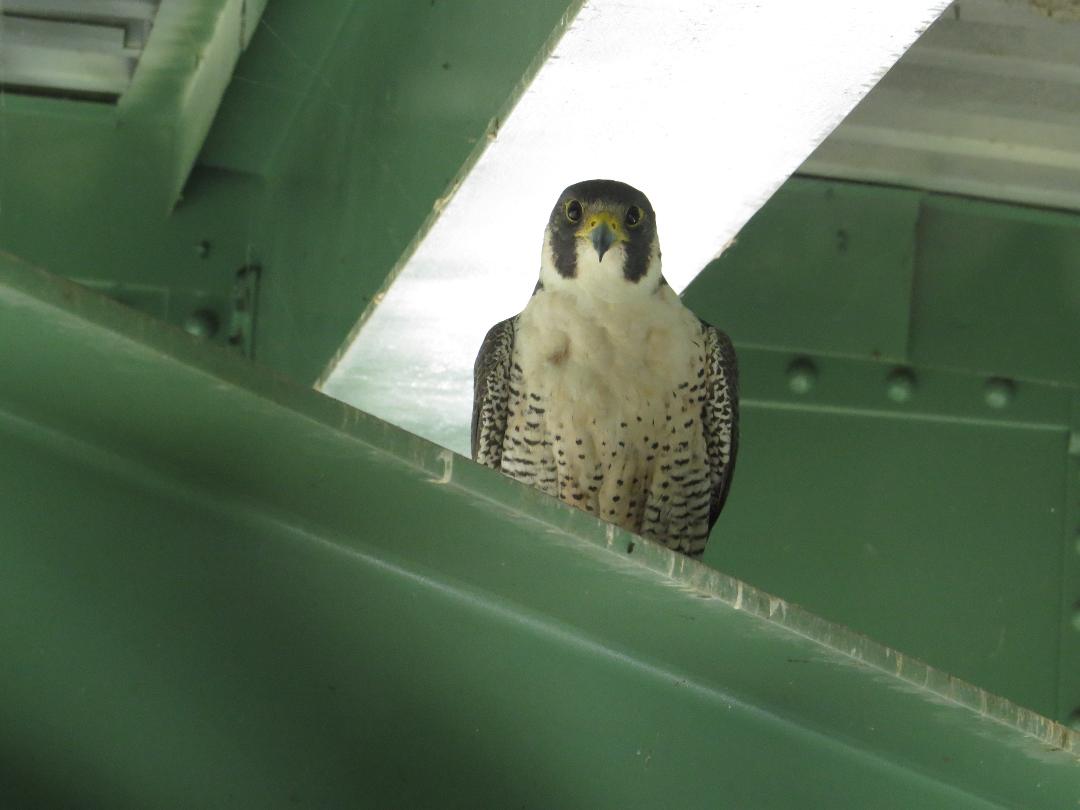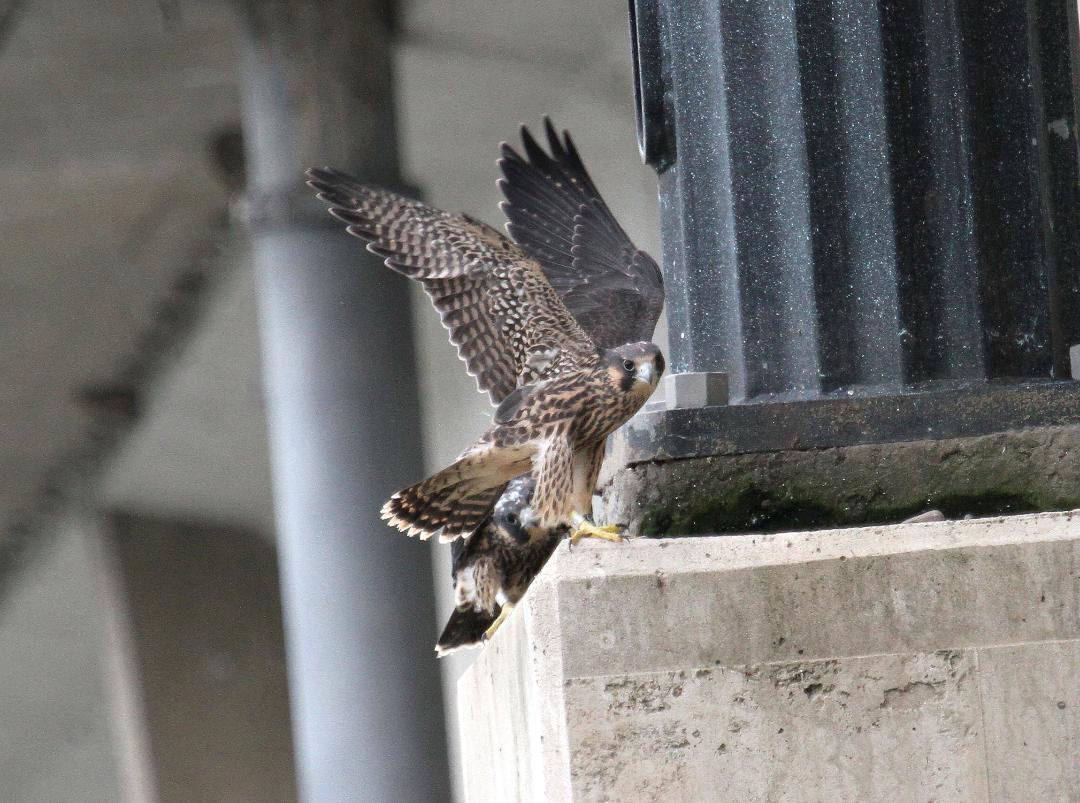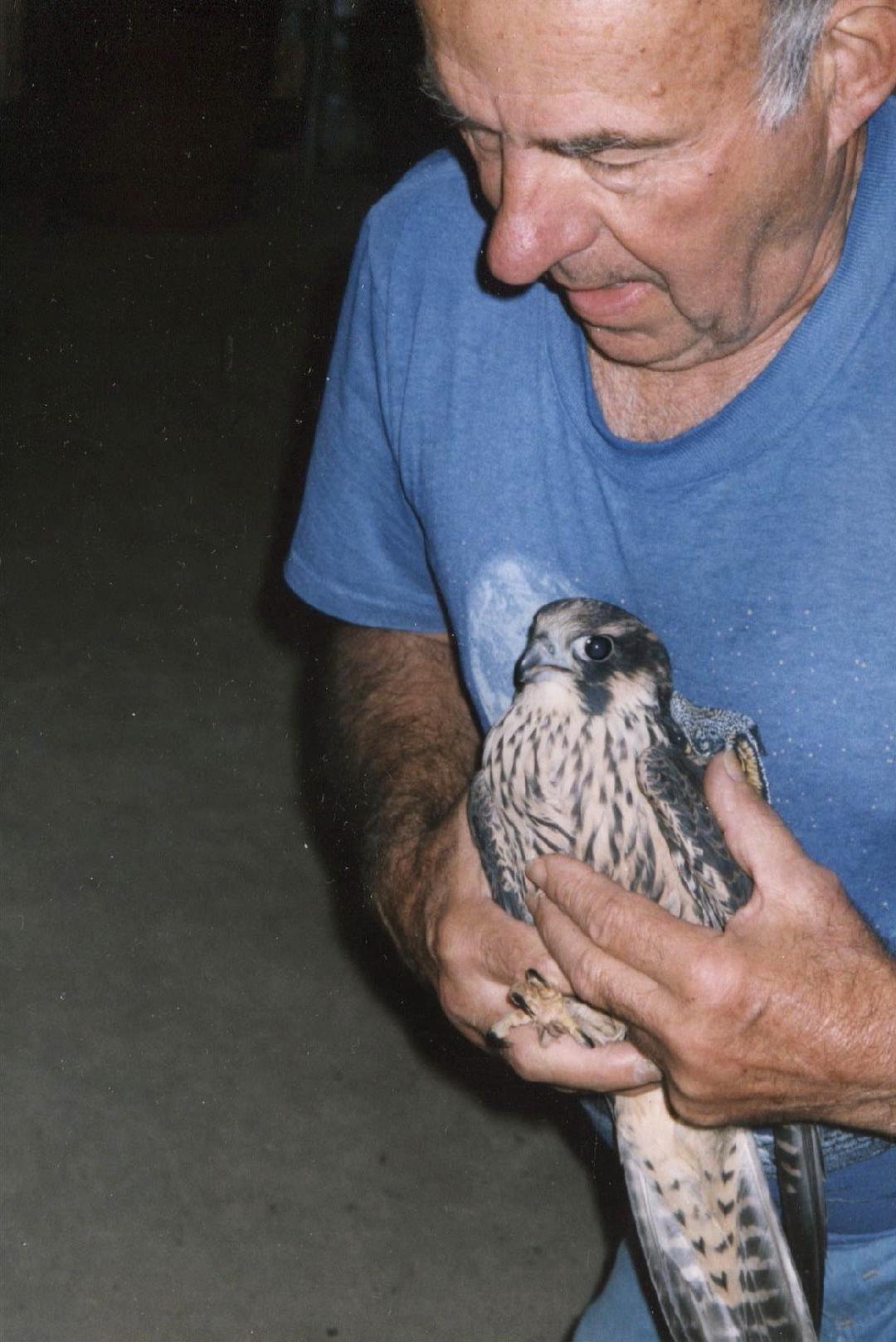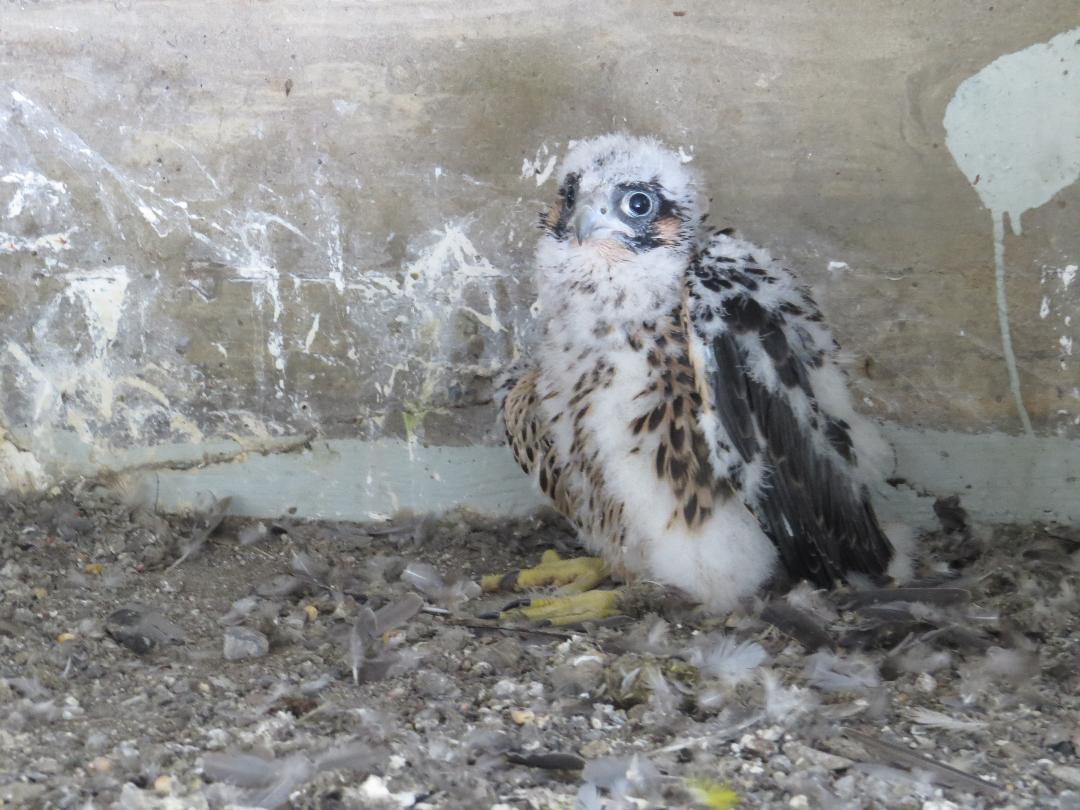BIRD LORE: O for a falconer’s voice
By Michael W. Kuriga
O, for a falconer’s voice, / To lure this tassel-gentle back again!
Those words were written by William Shakespeare in the late 1590’s in his play, Romeo and Juliet. Shakespeare’s father was a glove-maker and likely made gauntlets for many a hawking practitioner.
Going back several millennia, we find the Egyptian god Horus, who had the body of a man with the head of a Peregrine falcon. Horus was one of the most revered gods in Egyptian worship. The hieroglyph of an eye with a teardrop is the symbol for Horus. The teardrop represents the mylar stripe under the falcon’s eye.
Throughout history, people have made gods and symbols of raptors. Many a country uses an Eagle as its symbol of strength and prowess. The attributes of raptors have found their way to logos, names, and references in many products, placenames and weapons. And rightfully so. What’s not to be impressed by the speed, agility, and great looks of the fastest animal on earth?
For close to 4,000 years man has had a symbiotic relationship with raptors. At first it was to supplement the food larder, but by the Middle Ages, it became a form of sport. In fact, in the Middle Ages, if you were a person of leisure, you were advised to get a small falcon and chase birds. There’s a small falcon in Europe called a Hobby. You would fill your free time flying a Hobby, thus the origin of our word.
Photo: Adult Peregrine falcon, by Wayne Laubscher

During the Crusades, there was a prince who was captured and held for ransom. His father the king sent a chest of gold, but it was rejected. An adviser to the king suggested he send a falcon. Two white Gyrfalcons and a bejeweled glove were sent, and his son was released. So, a falcon is worth a king’s ransom.
Let’s move on to more modern times. The January 1920 issue of National Geographic had an article describing falconry in the times above. This sparked the interest of a few Pennsylvanians who began the Peregrine Club of Philadelphia. This was the first time falconry was recorded in the New World. The first falconry meet ever held in America was in Media, Pennsylvania, in 1936.
One of the founding members of that club was a friend of mine, Jim Rice. On one of his trips to Williamsport, he brought along a hand-written journal of all the Peregrine nesting sites in the eastern United States that he had visited or knew about. It was eye-opening to realize that there had been Peregrines nesting in Loch Haven; the last pair known in the state were actually up the Loyalsock Creek. Sadly, all the nests in his book were then empty, as raptors had disappeared due to the use of pesticides such as DDT, habitat loss and human intervention.
Photo: Pair of Peregrine fledglings, by Wayne Laubscher

Rachel Carson’s book Silent Spring brought attention to what we were doing to our natural world. It was a falconer in England who discovered the effects of DDT on the thinning of the Peregrine’s eggshell. Oologists had been collecting eggs for years and the dates of those eggs allowed scientists to determine that DDT was the cause of the thinning. What was worrying was that the Peregrine was eating a small bird, that ate an insect, that ate some crop that had DDT on it. We humans were eating the crop directly. Thus, the Peregrine became a human health barometer, as well as an ecological one.
In the early 1970’s, Peregrines were placed on the Endangered Species List. By that time there were no known nesting sites east of the Mississippi in the lower 48 states. Falconers, though, still had Peregrines that they used for falconry. They had developed methods to captive-breed these birds for their use and for re-introduction projects. Through their efforts, the Peregrine Fund was developed by Dr. Tom Cade at Cornell University. “Hacking” sites were set up in several locations out west, such as the Snake River Gorge, with nest scraps or manmade hacking boxes and young falcons called eyasses were set free from those sites. It proved successful.
In the early 1990’s, I was driving through downtown Williamsport and was shocked to see a wild Peregrine chasing pigeons. Although not nesting in the eastern states, they were still migrating from Canada and some came down through the Susquehanna Valley. I thought, why not hack some birds from top the Gennetti Hotel? I presented this idea to the Lycoming Audubon and a project of hope was formed. Ed Reisch, a local rehabber, built a hack box and was the main contact for the project. My part was to contact breeders around the country and procure the young for release.
The first year, we got permission to place the box was on top of the Commonwealth Bank building. A couple of young birds were brought from Hershey ZooAmerica’s breeding project but that was unsuccessful. The next and subsequent years, we moved the box to the top of the Gennetti and added a live video feed to the lobby. It proved a little more successful and one of the birds actually took up breeding on top of a bank building in Hamilton, Ontario. The following year, a male picked up a wild female and nested on a bridge over the North Branch in Pittston, Pa. Dan Brauning and I went on a PennDOT bridge inspection vehicle and banded those young.
Photo: Ed Reisch, local rehabilitator who coordinated the peregrine reintroduction program locally. Historical photo courtesy Lycoming Audubon Society.

After a few years we had birds still hanging around Williamsport and we were seeing first year birds early in the summer that had to be coming from a nesting site, but no one knew from where. After three years, it was discovered that one of our birds had set up housekeeping on a natural scrape just outside Montgomery, PA! This was the first natural nesting of Peregrines in the eastern United States since their demise from DDT. Success!
Since then, Peregrines have begun nesting on the Market Street bridge in Williamsport, both the Muncy and Montgomery bridges, around McElhattan, and on the cooling towers at the PP&L plant in Washingtonville. There may be others as well.
Photo: Peregrine nestling, by Wayne Laubscher

Thanks to the diligence of falconers, their trial-and-error attempts to captive-breed falcons, and their knowledge of releasing these birds back into the wild, an endangered species has been brought back from the brink. In the spring of 2022, the PGC removed the Peregrine and the Bald Eagle from the states Endangered Species list and downgraded them to “protected” status. A real success story! It shows what a local Audubon chapter, the Pennsylvania Falconry and Hawk Trust, other sportsman and the Game Commission can achieve.
About the Author:
Michael Kuriga is an Audubon member, long-time member of the North American Falconers Association, the Pa. Falconry and Hawk Trust and the founder of the International Eagle Austringers Association. He has served on many committees concerning falconry, including the committee to write the laws and regulations for falconry for Pennsylvania. His passion for the “Art”, has taken him many places around the world in pursuit of his passion, from flying Gyr falcons in Wyoming after Sage Grouse to using Golden eagles to catch deer in Hungary and the Czech Republic, the moors of Scotland and the Blackberry briars in Washington State. He lives by the motto: “Life’s an Adventure!”
About BIRD LORE:
BIRD LORE is produced by the Lycoming Audubon Society (serving Lycoming and Clinton Counties), Seven Mountains Audubon (serving Union, Snyder, Northumberland and Columbia Counties) and Tiadaghton Audubon Society (serving Tioga and Potter Counties). Information about these National Audubon Society chapters can be found at lycomingaudubon.blogspot.com and sevenmountainsaudubon.org and tiadaghtonaudubon.blogspot.com.


